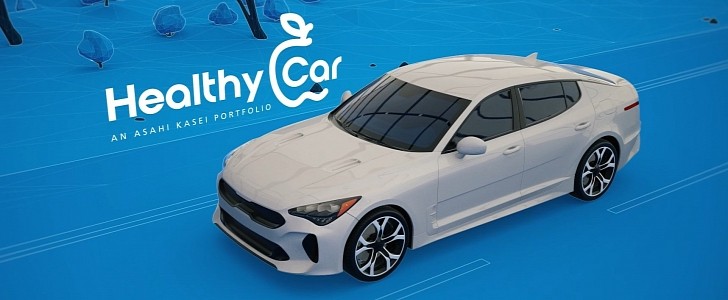According to recent survey data, the use of public transportation and ride-sharing services has decreased significantly over the last year, and there is now a growing demand for vehicles with cleaner interiors. The report suggests that the health crisis that we've been dealing with for more than a year now will have a long-term effect on future mobility concepts, as well as the materials and technology used within the vehicles.
This automotive trend was verified by Japanese chemical company Asahi Kasei and market research institute Skopos which conducted a survey about car interiors in December last year. Although the importance of quality and lasting interior design is growing, people are also becoming more conscious about the surfaces that they touch regularly and the air they breathe inside their vehicle.
Before, car interiors had to be nice-looking, comfortable, and soft to the touch. However, the health crisis has added a new perspective to this subject, highlighting the need for an overall cleaner environment and protection against invisible in-cabin threats.
Five hundred vehicle users from U.S., Germany, China, and Japan were asked about their preferences for their future automotive interior. The results show that 80 percent of the respondents in the U.S. listed "surface and seating materials that are easy to wash" and "water and dirt repellent surfaces" as their optional preferences. The study found that the same features are also influencing car users from Germany and China.
Car owners' increasing demand for hygienic technology is mirrored in their willingness to pay for options that have clean surfaces and ventilation inside the vehicle. The study showed that 90 percent of U.S. respondents who were were interested in buying a new car would be willing to pay an extra $750 for an optional package with interior materials that provide anti-microbial properties, stain and odor resistance, and improved scratch resistance. Interestingly enough, nearly 80 percent of truck and SUV buyers would be willing to spend the same price for the same optional features.
In terms of options that contribute to air safety, a similar pattern was observed. When purchasing a new car, 90 percent of U.S. respondents and over 80 percent of truck and SUV customers would be willing to spend $750 more for an automatic ventilation system that would remove microbes and pathogens in cabin air and control CO2 levels.
There's one thing certain: surface materials define how the driver and passengers view the vehicle interior. The driving environment itself is the primary interface between the customer and the car, and it looks like the trends are also changing in the automotive industry.
Before, car interiors had to be nice-looking, comfortable, and soft to the touch. However, the health crisis has added a new perspective to this subject, highlighting the need for an overall cleaner environment and protection against invisible in-cabin threats.
Five hundred vehicle users from U.S., Germany, China, and Japan were asked about their preferences for their future automotive interior. The results show that 80 percent of the respondents in the U.S. listed "surface and seating materials that are easy to wash" and "water and dirt repellent surfaces" as their optional preferences. The study found that the same features are also influencing car users from Germany and China.
Car owners' increasing demand for hygienic technology is mirrored in their willingness to pay for options that have clean surfaces and ventilation inside the vehicle. The study showed that 90 percent of U.S. respondents who were were interested in buying a new car would be willing to pay an extra $750 for an optional package with interior materials that provide anti-microbial properties, stain and odor resistance, and improved scratch resistance. Interestingly enough, nearly 80 percent of truck and SUV buyers would be willing to spend the same price for the same optional features.
In terms of options that contribute to air safety, a similar pattern was observed. When purchasing a new car, 90 percent of U.S. respondents and over 80 percent of truck and SUV customers would be willing to spend $750 more for an automatic ventilation system that would remove microbes and pathogens in cabin air and control CO2 levels.
There's one thing certain: surface materials define how the driver and passengers view the vehicle interior. The driving environment itself is the primary interface between the customer and the car, and it looks like the trends are also changing in the automotive industry.

